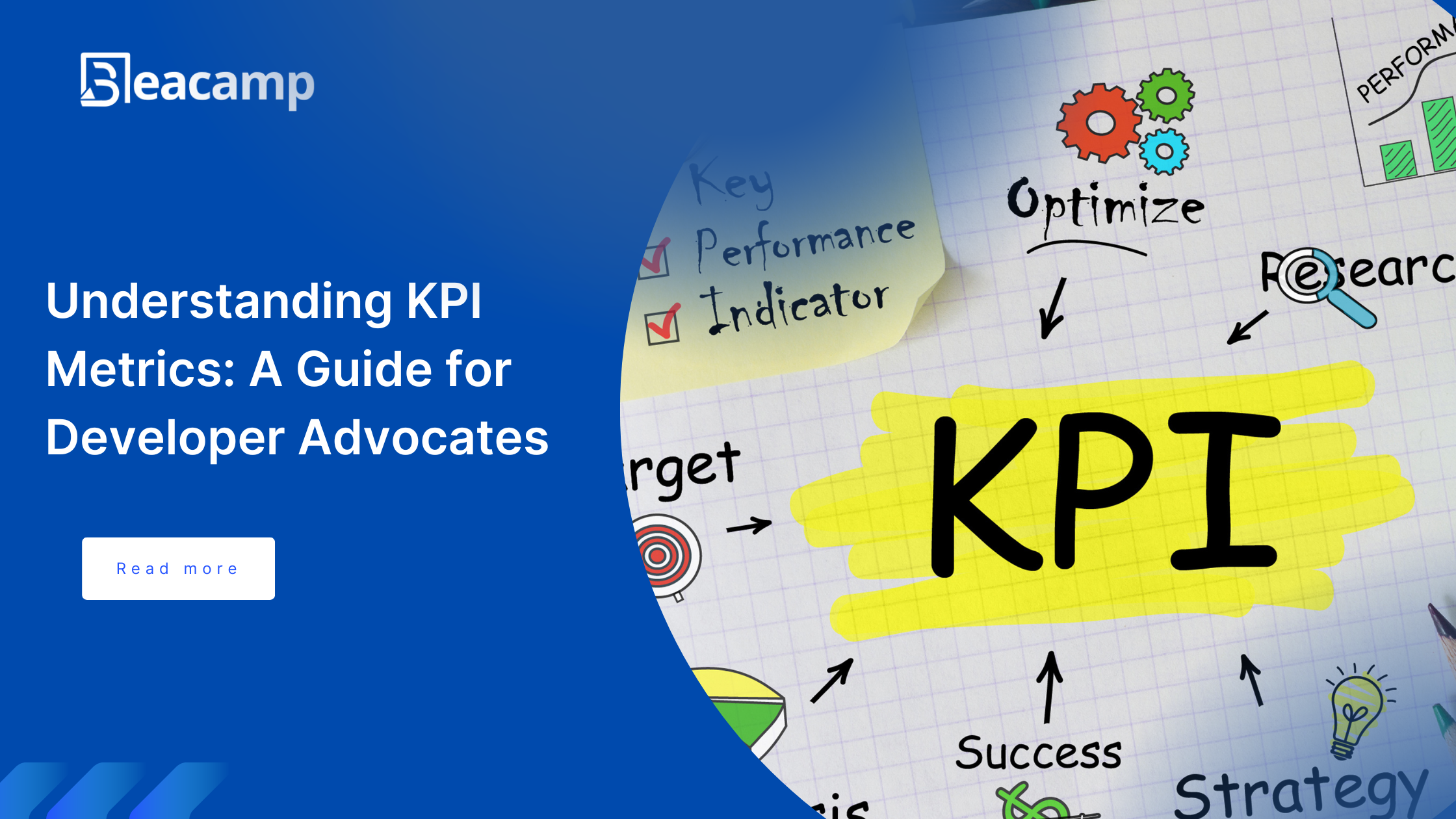Introduction
As a developer advocate, understanding Key Performance Indicators (KPIs) is needed to measure and showcase your impact. You can understand KPIs are quantifiable metrics that help you evaluate and analyze your strategies’ success and improve your advocacy efforts.
In this short guide, we will discuss KPIs, how they help you as a developer advocate, why you should set KPIs when working on advocacy strategies, and how to track them.
Let’s learn!
What are KPIs?

Key Performance Indicators (KPIs) are an important tool for measuring a team or company’s success. They provide a clear way to track progress toward strategic goals and identify improvement areas. For example, if a company aims to increase website traffic by 10%, it can use KPIs to track the number of unique visitors, page views, and other relevant metrics. This data can then be used to adjust the company’s marketing strategy and ensure it is on track to achieve its goals.
KPIs can also help to improve communication and alignment within a team or company. By setting clear and measurable goals, everyone can work together to achieve them. KPIs can also be used to track individual performance and provide employee feedback. This can create a culture of accountability and drive continuous improvement.
Setting Relevant Metrics

As a developer advocate, creating KPIs to measure your strategies should align with your role, bridging the gap between developers and companies. Your KPIs should be focused on measuring developer engagement and satisfaction, increasing the adoption rate of developer resources, growing the developer community, etc., which could lead to the success of your advocacy efforts in driving product adoption.
In developer advocacy or developer marketing, KPIs track the number of sign-ups, GitHub stars, social engagement rates, etc., of a developer-focused program or event. By setting measurable KPIs, you, as the developer advocate, can align efforts with your strategic goals, make better data-driven decisions, and improve your marketing strategies.
Tracking and Measuring KPIs

After setting KPIs for your advocacy efforts, consider using tools to track and measure them. These tools include analytics tools like Survey Monkey, Google Forms, GitHub discussions, and project management software like Asana. You should also consider maintaining and monitoring an online presence and using tools like Google Analytics and Hootsuite to measure engagement.
You can conduct surveys during the events and interactions to measure qualitative data like developer satisfaction, conduct surveys, or gather feedback through developer-focused events. Always create a consistent process to collect and analyze the data to maintain accuracy and identify trends.
Analyzing Your KPI Data

After tracking your key performance indicators (KPIs), the next step is interpreting the collected data. This process is important as it lets you extract key insights and make better decisions to impact your future endeavors positively. By analyzing the KPI data, you can identify trends, patterns, and areas that require attention. This lets you adjust your current strategies effectively, allocate resources wisely, and set realistic goals aligned with your company’s goals. Interpreting KPI data allows you to understand your performance better, enabling you to make data-driven decisions that drive growth, optimize processes, and enhance overall success.
For instance, if your data shows high engagement with how-to guides, you should invest more time in writing how-to guides. If you notice low adoption rates for a new API, consider adjusting your advocacy strategy to fit your target developer’s needs and pain points.
Adapting KPIs to Strategies

Key performance indicators (KPIs) are not fixed but change based on your current objectives and goals. It is important to regularly assess the effectiveness of KPIs and ensure they stay relevant and aligned with your company’s goals and market trends. KPIs should be reviewed and adjusted as needed to ensure they continue to measure what is most important and provide valuable insights for decision-making. Regular reviews allow the DevRel team to identify areas where KPIs are no longer effective and make necessary adjustments to improve their relevance and accuracy.
Also, staying updated with market trends and industry best practices is key when adapting KPIs. By being aware of the latest trends and developments, developer advocates can ensure their KPIs align with the changing tech ecosystem and reflect the current market dynamics. Continuous improvement and adaptation are also key to ensuring that KPIs remain effective and provide valuable information for monitoring progress and making informed decisions.
Conclusion
In conclusion, understanding the use of Key Performance Indicators is a smart move for developer advocates to show the impact and continuous improvement of their work in a team and a company. Setting meaningful metrics, tracking them, analyzing them, and adapting them in your strategies shows the value you bring to developers, the developer community, and the company.
Always remember that Key Performance Indicators are useful in helping you tell your success story and drive positive change.




